French “internet of things” engineer Olivier Mével just released La Machine as a device that reprises the true essence of Marvin Minsky’s first “useless machine,” albeit in a playful and boldly colored composition. Unsurprisingly, he drew stylistic inspiration from noted Postmodernist Ettore Sottsass. A founder of the Memphis Milano movement, Sottsass was never afraid to use jarring interplays of shape and pattern, often articulated as surface material.
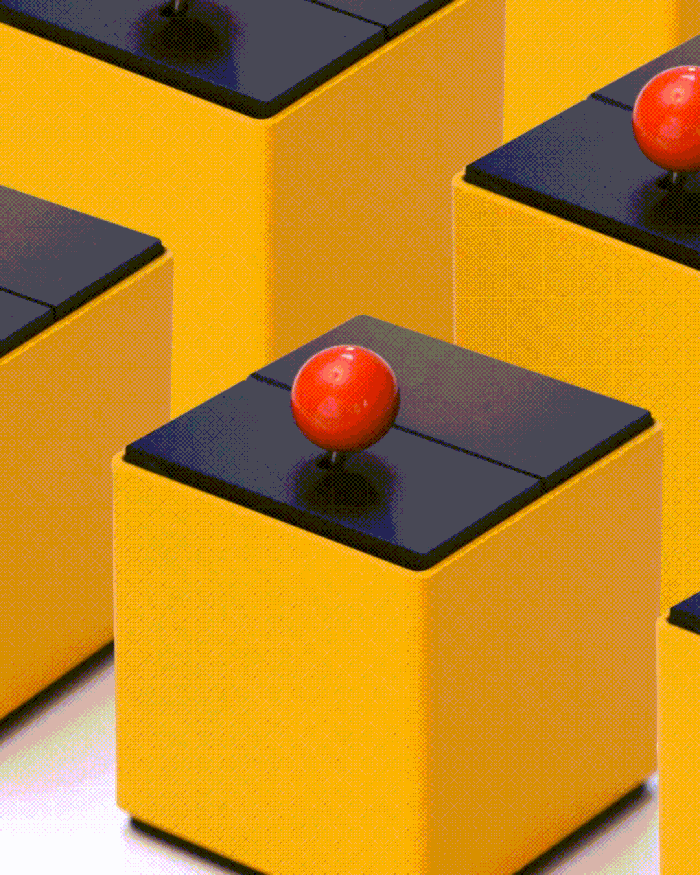
It reflects the same playfulness and supposed poetry Mével imbued in Nabaztag: a rabbit-shaped illuminated device – released in 2005 – that communicates the day’s forecast and one’s emails in both spoken text and flashing lights. It’s all about humanizing and personifying technology, not as a marketing ploy that nefariously draws us in for endless hours of mindless rot, but as an interactive object that more closely reflects our temperament and perhaps even distracts us from the stresses of the day.
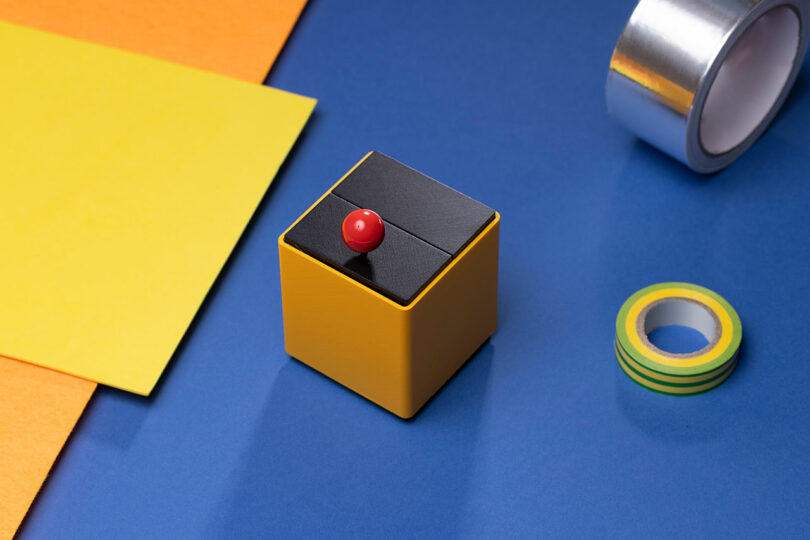
Unpredictability is another key factor. An entropic algorithm ensures that no two La Machines act the same. When and if it decides to turn itself off is hard to predetermine. If left alone for too long, it’ll take matters into its own hand – or its “little arm” lever – and remind us of its existence. A jingle sounds each time it does. The correlations with the Furbys of the late 1990s – zoömorphic robots that required a lot of attention – are palpable. Sometimes, it might refuse to cooperate altogether.
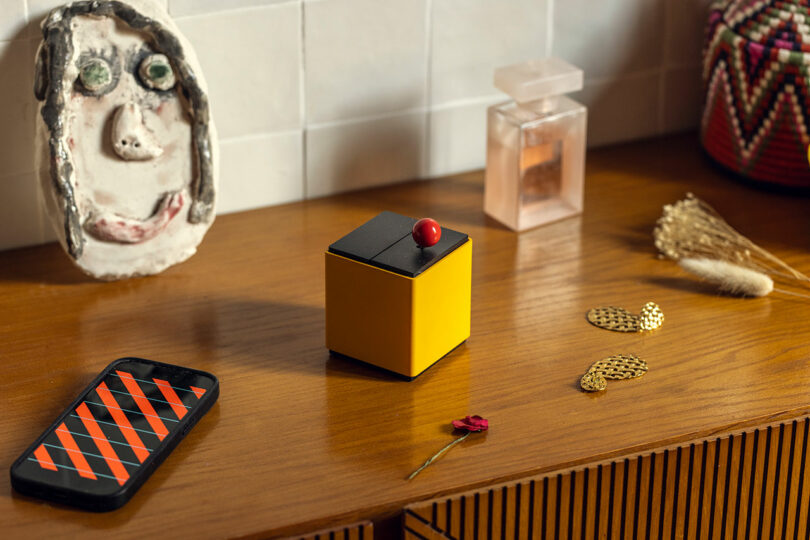
La Machine is anything but an addictive platform that is always there, ready to mine personal data. As Mével puts it: “La Machine is neither here to serve you nor enslave you, yet paradoxically becomes a necessary object: one that reminds us that the useless, the gratuitous, the absurd may in fact be precious spaces of freedom in our daily lives.”
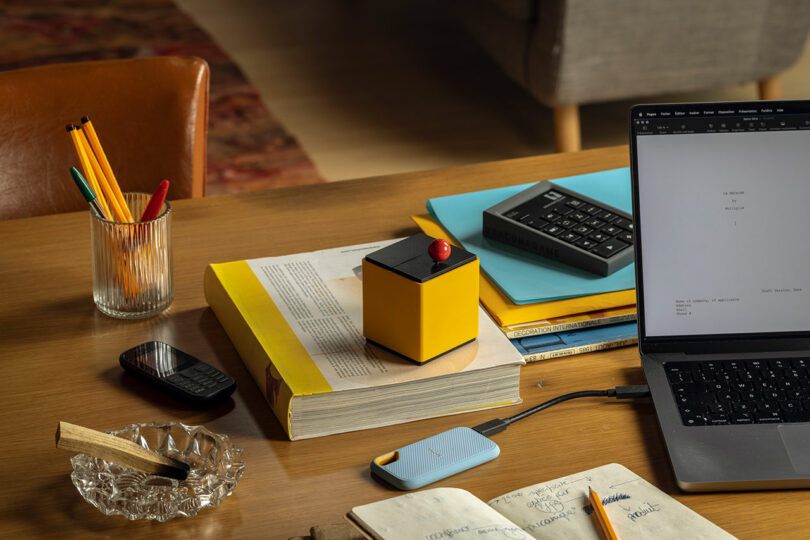
Satire doesn’t just crop up in literature and film. It also creeps into design. One has only to look back at the Italian Radicals of the 1970s or the Dutch designers of the early 2000s. Both groups poked fun at the profusely ornate styles of the past but also the heavy-handedness of “purist” modernism. Postmodernists often emphasized the power of the image over actual form and function as a means of social commentary.
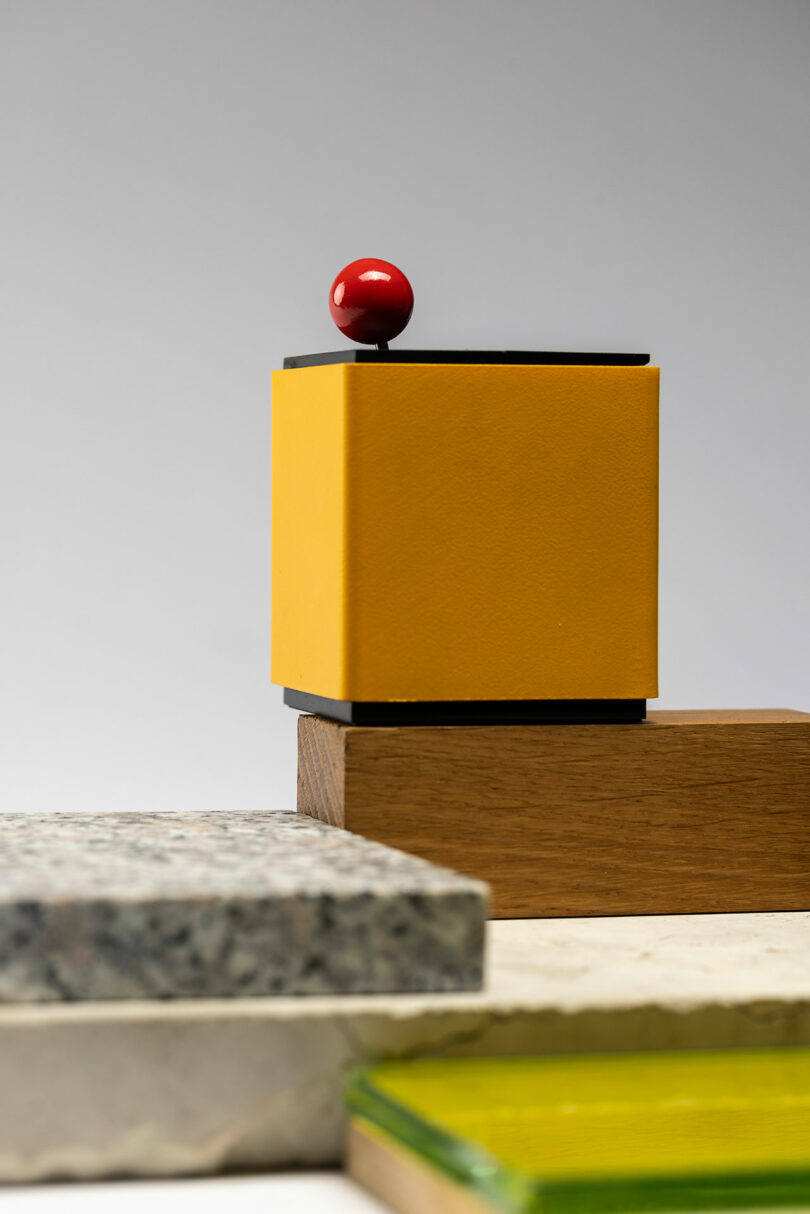
In technology, satire has often come as an antidote – a way of mitigating the ceaseless forward march of so-called “progress.” A decade ago, Jasper Morrison sought to push back the tide of the ever-refined and all-consuming smartphone with the Punkt MP01, a precursor to the revival of burner phones. All it had was a Dieter Rams-esque keypad to make calls and a small screen to send rudimentary texts, take notes, keep a calendar, and calculate numbers.
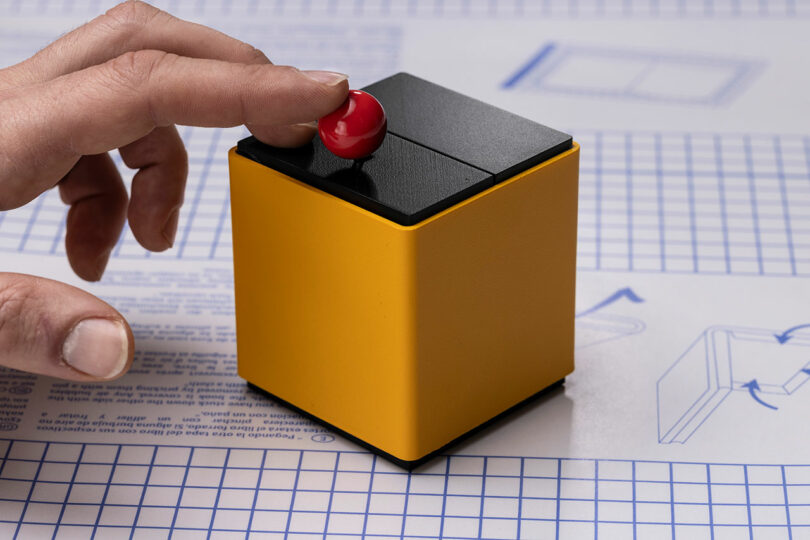
The desire to look back and nostalgize a pre-mechanical and digital age – or challenge the dominance of a few corporations co-opting certain innovations – has long preoccupied some of the more critical yet impactful technologists. Take American cognitive and computer scientist Minsky – a heavyweight of both Bell Labs and MIT extraction. He was one of the first to explore the potential implementation and wider implications of AI.
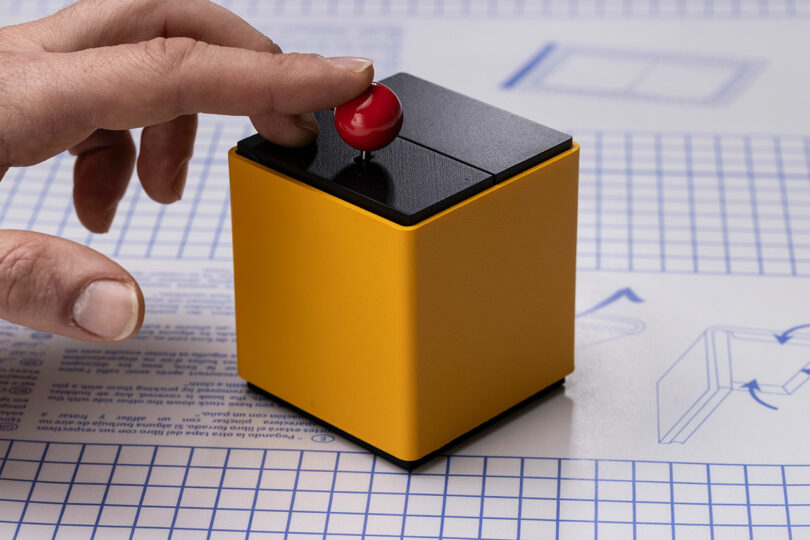
In 1952, he developed the first “useless” or “ultimate machine,” a novelty toy that would turn itself off right after an external actor had turned it on. One flipped a switch that activated a lever, appearing from a concealed compartment, that then flipped that switch back off. The inherent irony is hard to miss.
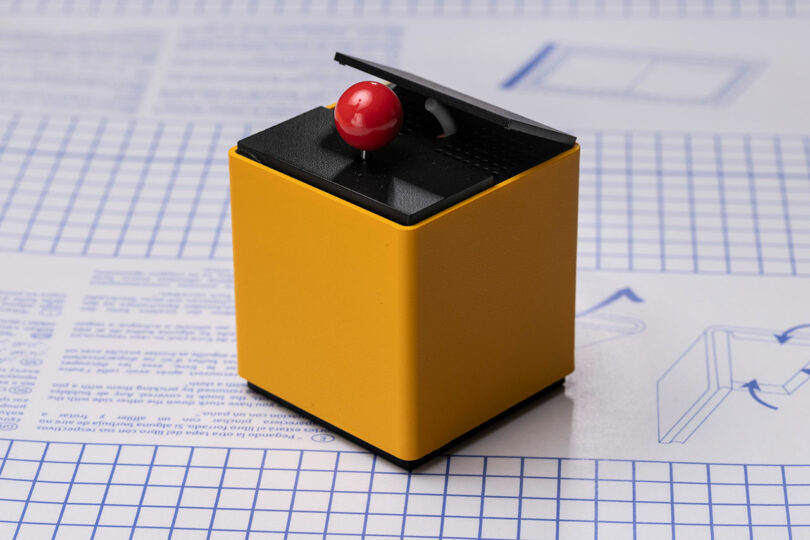
What it was primarily: an engineering hack. In the vein of do-it-yourself maverick Italian designer Enzo Mari, it was a format and kit of parts for others to reimagine and iterate upon. More and more complex versions were developed over the decades. Some turned it into a coin-snatching piggy bank. It’s even said that it inspired the autonomous Thing hand from the gothic sitcom The Addams Family.
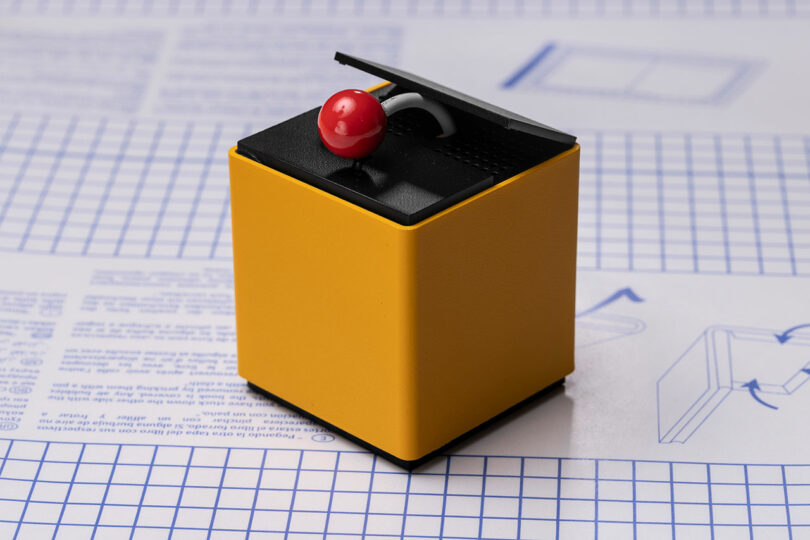
For La Machine, it’s a much more tempered expression. The base form is rendered in yellow, the oversized round knob in red, and the top layer “opening compartment” in black. The entire contraption – available in a limited run of 2,500 – is produced in France using 100% recycled plastic.
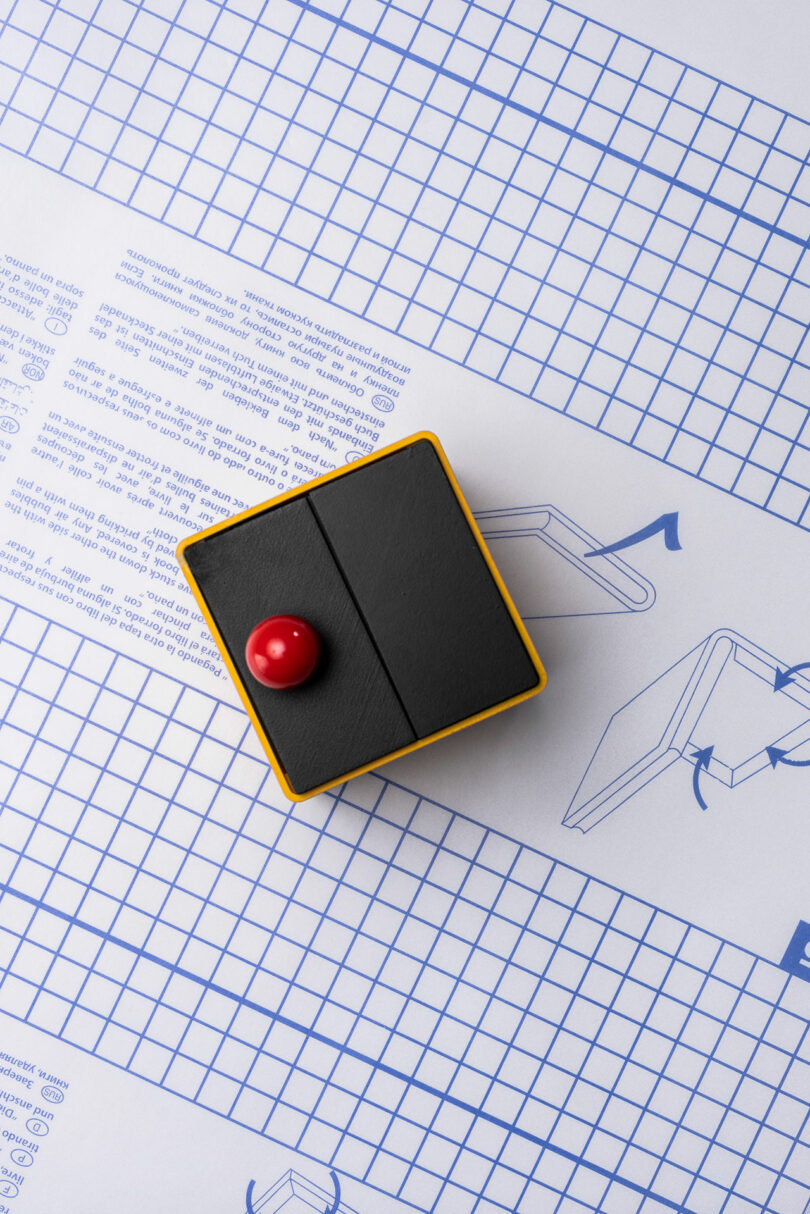
For more information on La Machine, visit la-machine.fr.
Photography courtesy of La Machine.
